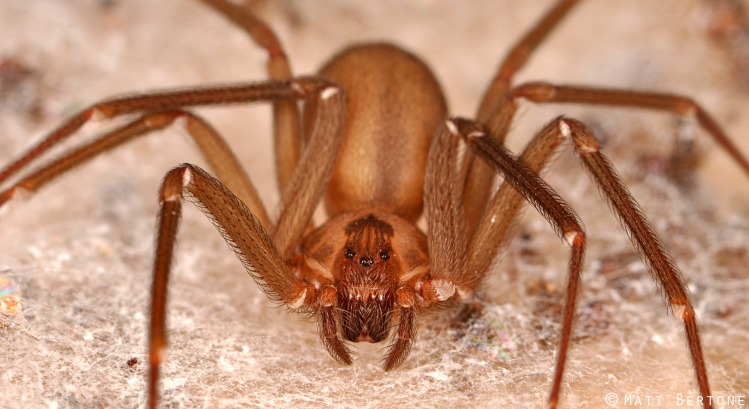The brown recluse spider is one of the deadliest spiders in the United States. It can be difficult to identify a brown recluse, but these spiders will usually have a violin-shaped marking on their back if they are visible.
A brown recluse bite can be a very dangerous thing and one that many people may not know how to treat properly. Fortunately, there are some very easy steps to take that can help you out if you find yourself bitten by one of these spiders.
What is a Brown Recluse Spider?
Brown recluse spiders typically have a brown violin-shaped marking on their cephalothorax. The only exception is in South America where a viola-shaped marking is seen. Brown recluse spiders are usually found in the carpeted areas of the home, but they can also be found outdoors under stones and logs, as well as in basements or under buildings that have been abandoned.

The brown recluse spider is not aggressive and will not bite unless it feels threatened or provoked. Even then, it will only bite once and has a small fang that cannot draw blood from humans. The venom of the brown recluse spider causes symptoms such as pain, swelling, itching, and blisters at the site of the bite.
Symptoms of a Brown Recluse Bite & Risks of Treatment Delay
Brown recluse spiders are known for their venomous bite that often goes unnoticed by the victim. It can be hard to identify a brown recluse spider as its coloring is similar to that of other spiders, and it usually hides in dark places.
Brown recluse spiders are mostly found in the southern and southwestern United States, as well as the eastern half of Texas. There is no health risk of encountering a brown recluse spider in areas outside of these regions. However, if you do find one anywhere else, your best course of action is to contact a pest control company.
If you have been bitten by a brown recluse spider and feel symptoms like red skin around or near the wound, leg cramps or pain, numbness or tingling in the bite area, fever, or chills.
Brown Recluse Spider Bite Treatment – Your Options and Which to Take First
A brown recluse spider bite can cause a wound with a red spot. If you see this, don’t panic – you should try to get it checked out by a physician. If the wound has become very large and deep or is oozing pus, it’s time to consider going to the hospital.
This kind of bite can be dangerous because they’re slow-moving and produce toxins that can cause necrosis in muscles and skin tissue.
To treat this type of bite, there are two main courses of action that you have: 1)sterile wound care or 2)antibiotics. Sterile wound care includes treatment with an antibiotic ointment like bacitracin or neomycin:
Symptoms and Signs of Brown Recluse Bite
Brown recluse spiders are very small, and so their presence is usually unnoticed until they bite someone. The bite becomes infected and causes a nasty, deep wound that can take a long time to heal.
Symptoms:
- The bite itself will hurt immediately, and the pain will become worse over time. It may be difficult to sleep or get comfortable due to pain.
- The wound will begin to itch intensely after a few days, as it continues to worsen.
- The wound that is left behind by the brown recluse spider’s bite can take months to heal properly and may scar if not treated correctly.
Signs:
- circular red mark from where the spider bit you will appear
How can I avoid brown recluse spider bites?
Brown recluse spiders are usually found in dark corners of the house or garden and can be identified by the violin-shaped marking on their head. They will often hide in boxes or piles of clothes and are most likely to be found at night. These spiders are not aggressive or looking for trouble, so they will only bite when they feel threatened.
The best way to avoid being bitten is to wear gloves and a long sleeve shirt when performing everyday tasks like sorting through clothes, cleaning out cupboards, gardening, etc. It is also important to shake out shoes before putting them on and inspecting any items that have been stored for a long period of time before using them again. Lastly, If you find a spider, it is important not to kill it, but rather to catch it in a container with an open top. Doing so will allow the spider to live, and will also help ensure that no other spiders are accidentally killed.
Conclusion
If you have been bitten by a brown recluse, the best treatment for you is to take an oral antibiotic, such as amoxicillin, for three to four weeks. If you have an open wound that has not healed three months after being bitten, you may need skin grafting. It is important to be aware of the symptoms of infection, which include chills, high fever, and vomiting. If you have any of these symptoms and have been bitten by the spider.